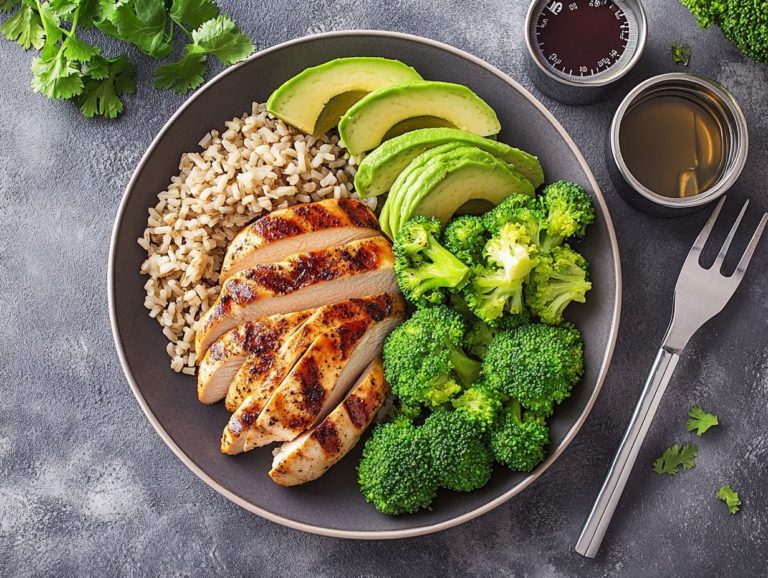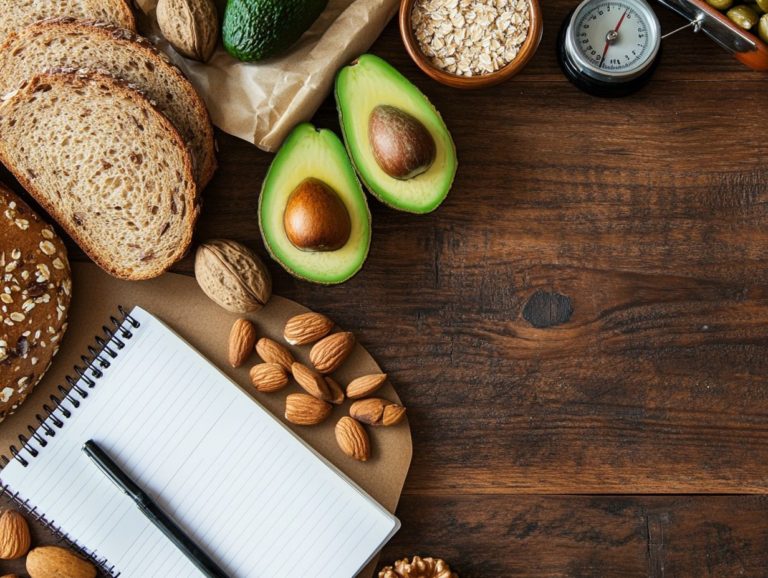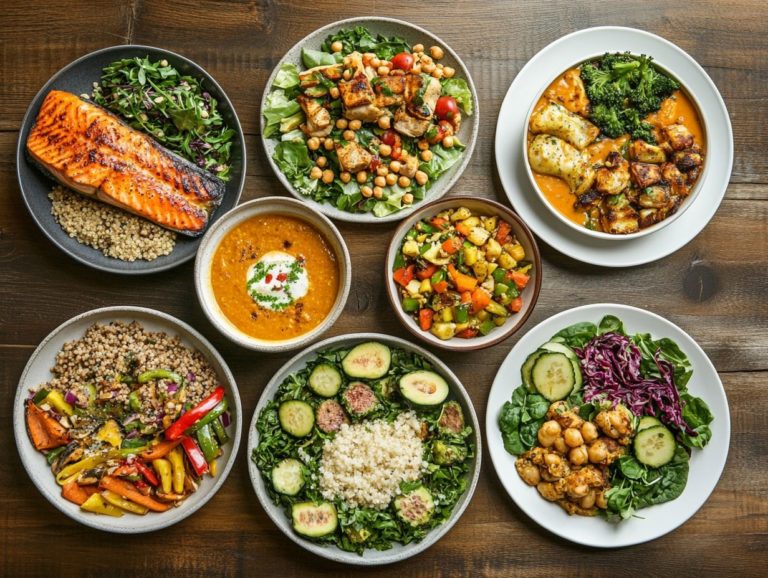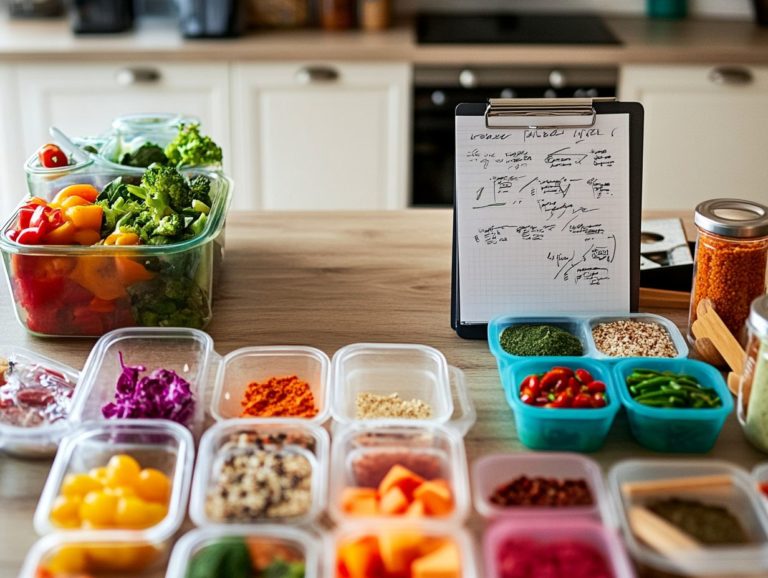How to Use Leftovers in Your Meal Plan
Are you weary of discarding uneaten meals? By incorporating leftovers into your meal plan, you can significantly reduce waste while saving both time and money.
This article delves into effective strategies for meal preparation and storage. It offers innovative ways to transform those leftovers into enticing new dishes while addressing crucial health considerations to ensure your meals remain nutritious and safe.
Join in as you unlock the potential of those extra servings languishing in your fridge!
Contents
Key Takeaways:
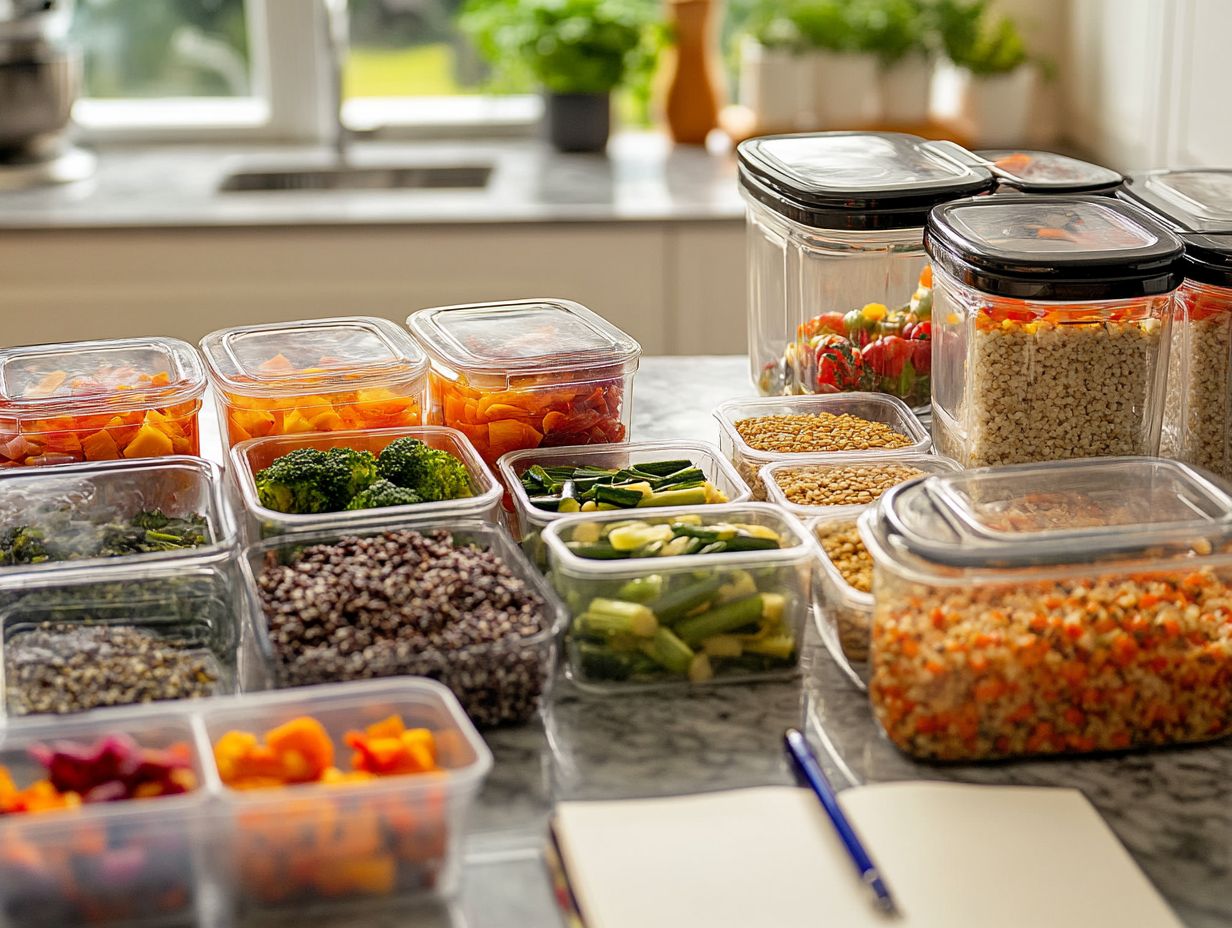
- Turn leftovers into delicious meals and save time!
- Get creative with your leftovers to keep your taste buds excited.
- Store and handle leftovers properly to ensure food safety.
Benefits of Incorporating Leftovers
Incorporating leftovers into your meal plan brings a wealth of benefits. It can elevate your cooking experience, save precious time on hectic weeknights, and support a healthier lifestyle.
For busy individuals, utilizing leftovers not only reduces food waste but also simplifies meal prep. This makes it easy to whip up nutritious meals filled with essential proteins and vibrant vegetables.
This method encourages you to be creative with your meals, allowing you to transform yesterday’s dishes into exciting options for breakfast, lunch, and dinner.
Strategies for Incorporating Leftovers
Crafting effective strategies for leftovers can transform your cooking experience. It makes the process more straightforward and enjoyable as you plan meals around the ingredients you already have on hand.
Meal Prep and Storage Tips
Proper meal prep and storage techniques are essential for maximizing the freshness and usability of your leftovers. By honing these skills, you not only reduce food waste but also maintain a healthy diet.
With effective strategies, make sure your meals stay delicious and fresh, even after being frozen or stored for a few days. For example, let stews and chilis cool completely before transferring them into airtight containers or freezer bags. This simple step prevents ice crystals from forming, preserving the texture you love.
For ingredients like baked potatoes, wrap them tightly in foil or plastic wrap to retain moisture. When reheating, opt for low and slow methods whether using the oven or a covered microwave to preserve taste and nutrients.
Creative Ways to Use Leftovers
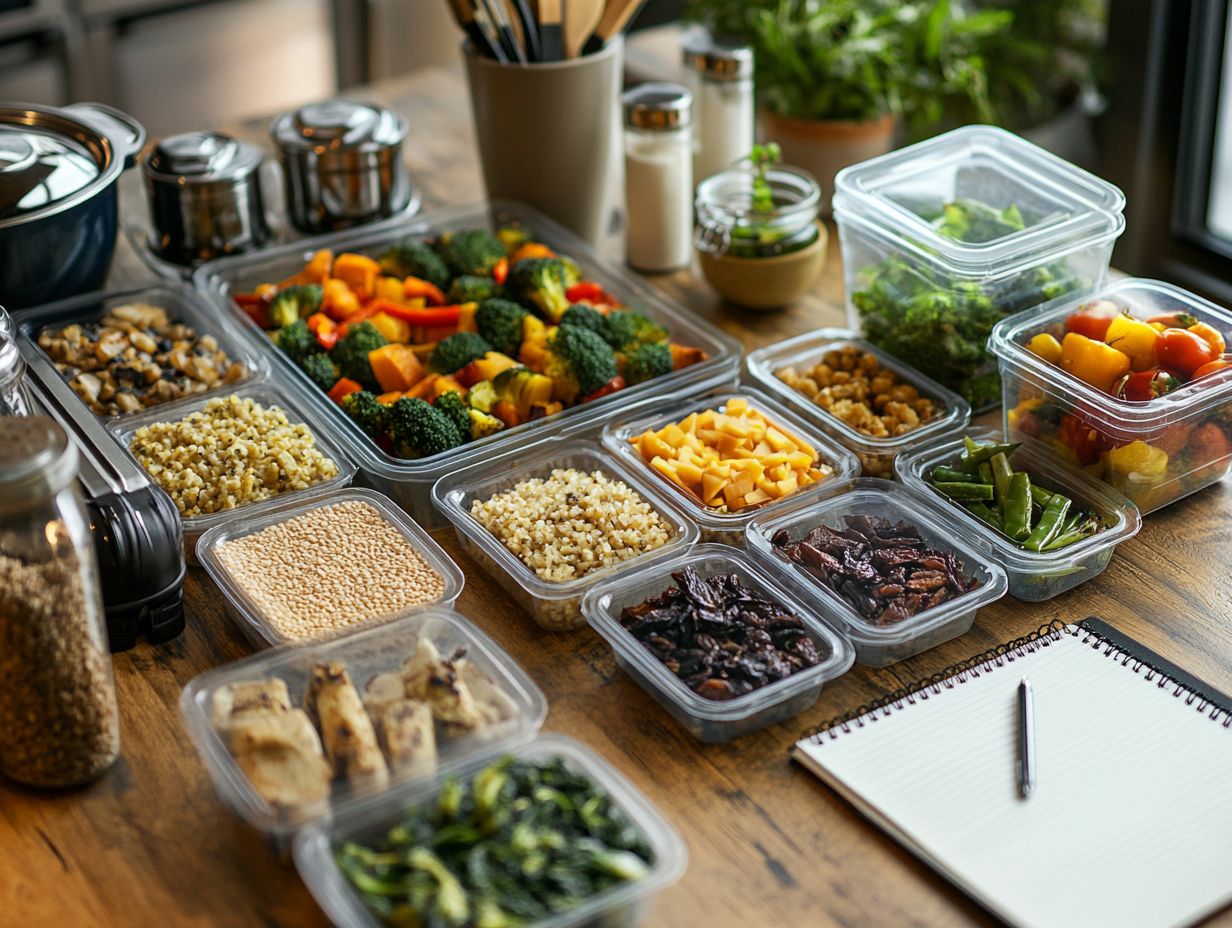
Get ready to discover fun and tasty ways to use your leftovers! This not only allows you to savor a delightful array of meals but also alleviates the pressure of starting from scratch each time.
Embrace the art of reinvention in your kitchen and see how leftover ingredients can inspire your next gastronomic adventure.
Transforming Leftovers into New Dishes
One of the most rewarding aspects of cooking is the art of transforming leftovers into new and intriguing dishes that surprise and delight your family at mealtime.
With a touch of creativity, yesterday’s roasted chicken and assorted vegetables can be repurposed into a creamy rice bowl. Just saut those chopped leftovers with a splash of broth, then stir in some cooked rice and a generous dollop of cream or a vegan alternative to elevate the flavors.
If you’re feeling adventurous, experiment with different sauces like teriyaki or barbecue. These add bold tastes that turn ordinary meals into culinary escapades. Embracing these simple transformations helps reduce waste and offers a fantastic opportunity to explore various cuisines right from your kitchen.
Start transforming your leftovers today, and enjoy delightful, waste-free meals tomorrow!
Using Leftovers in Different Meals
Incorporating leftovers into various meals throughout your day can enhance your dining experience and ensure that no food goes to waste.
By creatively repurposing last night s dinner, you can craft a tasty breakfast frittata filled with veggies and protein, or toss together a refreshing lunch salad with grains and meats. Think of mixing roasted vegetables with eggs and baking them to fluffy perfection, while a quick salad bursts with vibrant greens, cheese, and a zesty vinaigrette.
Not only does this reduce food waste, but it also introduces exciting flavors and textures, making each meal unique and satisfying. With these simple ideas, overlooked leftovers can transform from forgotten items in your fridge into tasty meals.
Making the Most of Leftovers
Maximizing your leftovers reduces waste and offers a chance to save money while making healthier meal choices throughout the week. Embracing this practice transforms what could be discarded into delicious, nutritious options that enhance your meals.
Minimizing Waste and Saving Money

Minimizing food waste by maximizing your leftovers can lead to substantial savings in your monthly grocery budget while fostering a more sustainable lifestyle.
Transforming what might otherwise end up in the trash into nourishing meals could help you slash your grocery expenses by as much as 25%. For instance, a family that creatively repurposes chicken from a Sunday roast into tacos or soups can enjoy multiple meals from a single purchase.
This strategy shows how well you can budget while supporting waste reduction efforts. Studies reveal about 30-40% of the food supply is wasted in the U.S. By tapping into the potential of your leftovers, you enhance your financial resilience and embrace an eco-conscious mindset.
Health Considerations
Incorporating leftovers into your meals requires careful attention to health considerations, particularly food safety (practices to keep food safe to eat) and nutritional value, to ensure a wholesome dining experience.
By prioritizing these elements, you can elevate your meals while minimizing waste.
Food Safety and Proper Storage
Understanding food safety and proper storage techniques is essential for ensuring your leftovers remain safe and enjoyable to eat later on.
To maintain food quality and prevent foodborne illnesses, it’s crucial to follow recommended refrigeration temperature guidelines. Ideally, keep your refrigerator at or below 40 F (4 C) to inhibit the growth of harmful bacteria.
When reheating those delicious leftovers, make sure to bring them to an internal temperature of at least 165 F (74 C) to effectively eliminate any potential pathogens. A food thermometer can be your best friend in achieving these temperatures with precision.
Storing leftovers in shallow containers allows them to cool quickly, enhancing food safety and longevity. This way, your meals remain both safe and satisfying.
Nutritional Value of Leftovers
The nutritional value of your leftovers can rival that of freshly prepared meals, especially when they are packed with proteins and vibrant veggies.
When you store these meals properly and reheat them with care, they maintain a significant level of essential nutrients. Take quinoa, lentils, and steamed broccoli, for example; these leftovers retain their vitamins and minerals, allowing you to enjoy a wholesome meal even days later.
Incorporating a diverse array of ingredients ensures a balanced intake of carbohydrates, fats, and proteins, providing your body with the fuel it needs for optimal functioning. Emphasizing the smart use of leftovers not only minimizes food waste but also promotes a healthier lifestyle through meal planning and mindful eating.
Frequently Asked Questions

Start using your leftovers creatively today! Think of all the tasty meals you can create.
What are some meal planning tips for using leftovers?
Here are a few tips to keep in mind when using leftovers:
- Plan your meals in advance to know when you’ll have leftovers.
- Store leftovers in individual portions for easy use.
- Mix leftovers into new dishes. For example, use leftover chicken in a stir-fry or add leftover veggies to a salad.
- Get creative and try new recipes with your leftovers to keep meals exciting!
How can I repurpose leftovers to make a new meal?
Endless possibilities exist for repurposing leftovers. Here are a few ideas:
- Make a frittata or omelette using leftover veggies, meats, and cheese.
- Create a grain bowl with leftover rice or quinoa, protein, and veggies. (A grain bowl is a dish with grains topped with various ingredients.)
- Transform leftover mashed potatoes into potato pancakes or add them to soup or stew.
- Make a burrito or quesadilla using leftover meat, beans, and veggies.
How can I use leftovers to save time and money?
Using leftovers can save you both time and money:
- Using leftovers means less food waste, which saves money on groceries!
- You can easily reheat leftovers for a quick meal, saving time in the kitchen.
- Being creative with leftovers can help you avoid eating out or ordering takeout, which saves money.
What are some easy ways to store and reheat leftovers?
To maximize your leftovers, it’s important to store and reheat them properly:
- Store leftovers in airtight containers or bags to keep them fresh.
- Label and date your leftovers to know when to use them.
- Reheat leftovers in the microwave, oven, or stovetop, ensuring they reach a safe internal temperature.
- Avoid reheating leftovers more than once to prevent foodborne illness.
How can I use leftovers to add variety to my meals?
Using leftovers can help you add variety to your meals:
- Incorporate leftovers into new dishes to create different flavor profiles.
- Use leftover meats or veggies as toppings for homemade pizzas or flatbreads.
- Host a leftover buffet-style dinner, allowing everyone to mix and match their favorite leftovers.
- Use leftovers as a base for soups, stews, or casseroles, adding new ingredients for unique tastes.
How do I know if my leftovers have gone bad?
It’s crucial to know when to toss out leftovers to avoid food poisoning. Watch for these signs:
- A foul smell or off odor.
- Visible mold or discoloration.
- Sliminess or a change in texture.
- Any signs of spoilage, such as bubbling or fermentation.


